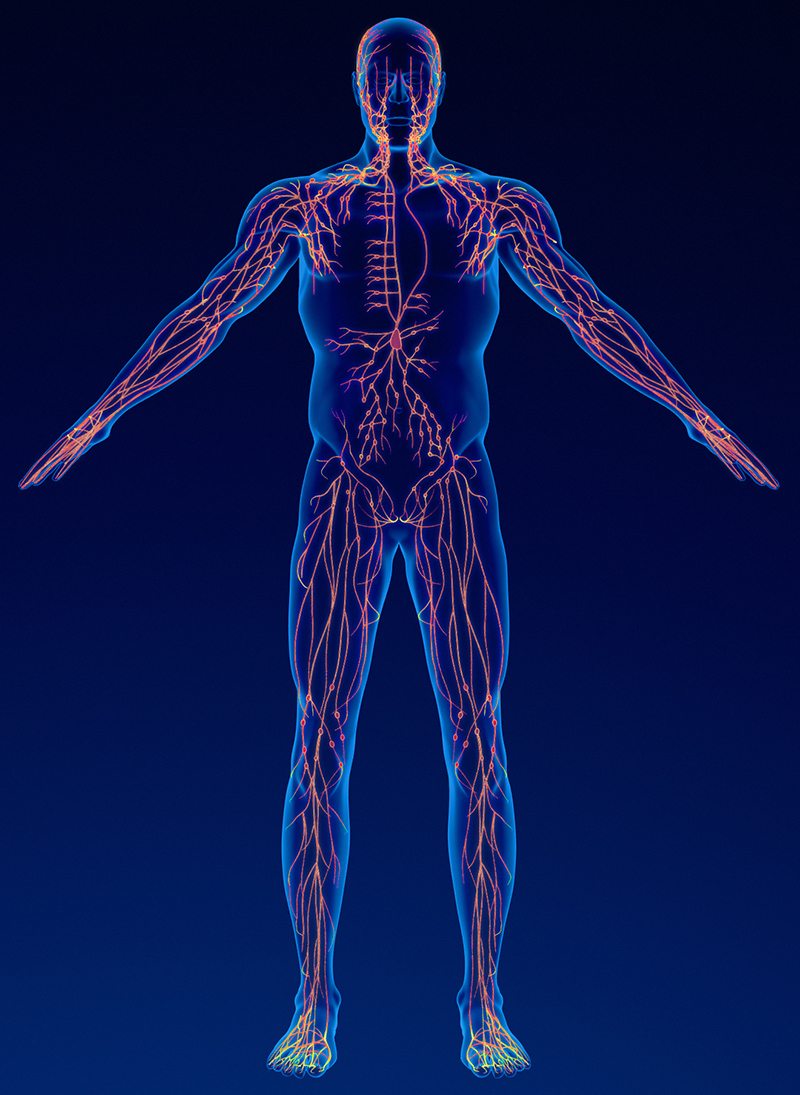The Lymphatic System

The lymphatic system forms part of the immune system, working in unison with the circulatory system. It is an intricate network of vessels that have the specific function of maintaining fluid levels, removing cellular waste, protecting against infection, and transporting fats, proteins and excess fluid back into the bloodstream. When the lymphatic system is not working properly it can lead to a build-up of excess fluids, resulting in oedema (swelling) and even infection1.
Disorders of the Lymphatic System
Lymphoedema is the abnormal accumulation of protein-rich fluid in the tissue caused by a damaged lymphatic system such as removal of lymph nodes, radiation, traumatic injuries. It is characterised by swelling, changes in the skin and tissue texture, chronic low-level inflammation, and vulnerability to infection. People can develop lymphoedema in any part of their body.
Lipoedema is a chronic and progressive condition almost exclusively affecting women. It is characterised by an abnormal, symmetrical accumulation of painful fat predominantly, but not exclusively, in the arms, legs, buttocks, trunk. It does not affect feet or hands. Amongst other things it causes orthostatic oedema, bruising, impaired mobility and reduced quality of life. It is poorly understood and often misdiagnosed for obesity2.
Oedema is the general medical term for swelling, with the excess liquid mainly consisting of water. Often temporary, oedema happens when the lymphatic system cannot remove excess fluid effectively away from the tissues. Local oedema is the body’s natural response to injury or inflammation commonly seen with sprained ankles. If left untreated, this has the potential to become lymphoedema.
Medical Devices Used in Lymphatic Therapy
ABPI Machine (Ankle Brachial Pressure Index) – This device is a doppler ultrasound and sphygmomanometer all in one screening tool that determines the presence of peripheral artery disease by comparing the blood pressures at the ankle and the arm. According to Wounds UK Best Practice Statement, (2019), prior to developing a treatment plan involving compression for the lower limb, an ABPI must be undertaken to confirm that compression therapy is safe3.